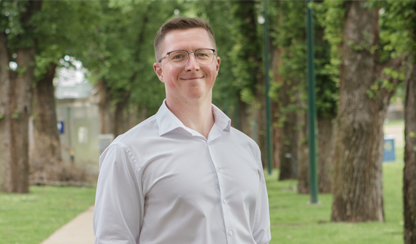
The theme for World Diabetes Day 2021 is improving access to diabetes care. We spoke with PhD student Jedidiah Morton about his passion for health equity and his work highlighting how diabetes care can be a postcode lottery even in Australia.
What does the diabetes health gap look like in Australia?
Diabetes prevalence differs by socioeconomic status. For example, about 15 per cent of people in Australia’s wealthiest areas have type 2 diabetes, while in our most disadvantaged areas it’s 26 per cent.
But poverty and inequality don’t just contribute to the development of disease, the inequity is also apparent among people with diabetes. We consistently find healthcare outcomes and diabetes treatment are worse for people with diabetes in disadvantaged areas.
Australia boasts universal healthcare, why do inequities in diabetes care and outcomes exist here?
In terms of accessing healthcare, barriers manifest themselves in many ways. People in more disadvantaged areas may find it more difficult to get time off work for medical appointments, they may face longer waiting times for specialists, they may be less able to afford to see specialists, and they may be less able to afford the co-payments associated with prescription medications.
It’s also worth noting that because Australia is so large, remoteness also plays a major role in equitable healthcare. Experienced doctors and specialists are more likely to work in our cities. Alongside socioeconomic status decreased availability of services in remote areas is one of the key factors behind the far poorer diabetes outcomes for Australia’s Aboriginal people when compared to the rest of the population.
Socioeconomic status has been found to impact healthcare outcomes in almost every diabetes population studied, including Australia. We’re still not quite sure exactly what drives this, but healthy behaviours (eating well and exercising frequently) are only thought to contribute about 30 to 50 per cent. This means that other factors – such as access to green space, increased exposure to pollution, increased work stress, and yet unidentified factors – are almost certainly at play.
That’s why I would say it’s a misnomer to call Australia’s healthcare system universal when there are clearly many barriers to true health equity in this country.
Your research has shown that access to some newer diabetes treatments can depend on where you live in Australia. Why do you think this is happening?
Yes, we found last year that people in more disadvantaged or remote areas were less likely to receive newer diabetes drugs (that have cardiovascular benefits) when they were first listed on the PBS. Newer data accessed this year showed this disparity was still there in 2019, 11 years after the first of the newer drugs became available.
We were able to show that it’s unlikely this disparity is due to the cost of the newer drugs or people’s access to specialists. So, we can only speculate as to the cause.
What our results do suggest is that the newer drugs are more likely to be used for glycaemic control, and not for their cardiovascular benefits, in more disadvantaged areas. This could be an important point of intervention in reducing disparities in healthcare outcomes by socioeconomic status.
Where has research pointed to possible ways of closing the equity gap for people with diabetes?
One interesting study showed that something as simple as just providing a housing voucher for families to move to low-poverty areas reduced the prevalence of diabetes, compared to a control group, from 20 per cent to 16 per cent. That’s a small but significant decrease.
This study highlights how much poverty and the wider environment shapes health. I believe that closing the diabetes equity gap is going to come from policy measures that deal with the underlying inequities in Australian society and access to healthcare, and not just the surface-level problems.
I think the role of the diabetes community is to get this message out there. We need to lobby for policy change that reduces socioeconomic disparities and therefore reduces the impact of diabetes.
What’s next for your research to address disparities in diabetes care?
Because most solutions are likely to be policy-driven, one of the most important things to do is demonstrate to policy makers that any proposed solution is cost-effective. Our group is currently working with some colleagues at Monash University to build a cost-effectiveness model that will be able to determine which proposed measures to close the diabetes equity gap are not just effective but are also cost-effective (or even cost-saving).








